Meet this year’s cohort of outstanding young alumni.
Columbia College | Columbia University in the City of New York
Meet this year’s cohort of outstanding young alumni.

CCT is excited to announce the third installment of Lion’s Pride, a celebration of inspiring alumni from the last decade. Our nine honorees are making waves in industries as diverse as architecture, artificial intelligence and cancer research; winning awards for leadership, innovation and humanitarian efforts; and shining in spaces from the White House to the Olympics to the pages of Vanity Fair. We hope you’ll be as motivated by their successes — and their stories — as we are. As always, we thank Columbia College Young Alumni for its partnership.
— The Editors
Interviews and text by Nathalie Alonso ’08, Alexis Boncy SOA’11 and Jill C. Shomer • Illustrations by Heather Gatley
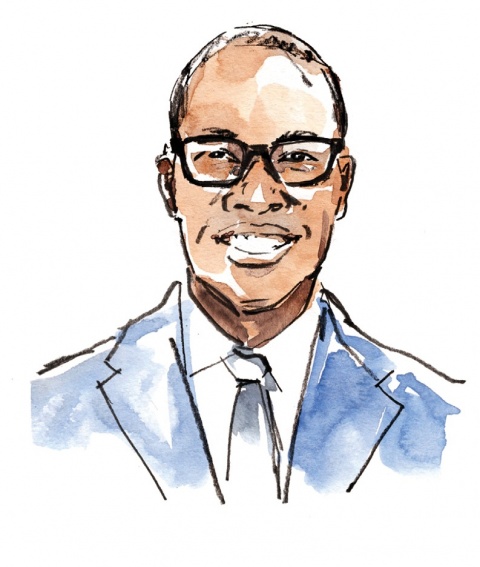
From his days at Columbia to his time at Harvard Law and now as a practicing attorney, Kareem Carryl ’15 has shown a steadfast commitment to leadership, community-building and equity.
For Carryl, a Brooklyn native and the son of Caribbean immigrants, serving on the Columbia College Student Council (CCSC) was a defining experience. He joined as a sophomore, was elected class representative his junior year and ultimately became senior class president. “[At Columbia], I met many people from backgrounds and walks of life that were incredibly different from my own,” Carryl says. “We learned from one another, debated vigorously, and formed amazing relationships.”
While on CCSC, Carryl successfully advocated for Dean’s List inductees to be formally recognized by the dean. As senior class president, he was also deeply involved in developing programming to celebrate the class. However, Carryl, who attended the College as a member of JPMorganChase’s competitive Thomas G. Labrecque Smart Start Scholarship Program, is most proud of working with University administration to subsidize caps and gowns for graduating seniors for whom purchasing regalia was a hardship. “Affordability was an issue that was coming to the fore,” recalls Carryl, who received the College’s Leonard A. Pullman Memorial Prize and King’s Crown Leadership Excellence Awards for Principled Action and Community Building. He adds, “Cost should not be a barrier to celebrating a graduation.”
Carryl was also involved with Columbia College Student Ambassadors, an organization that sought to foster connections between current students and the Columbia College Alumni Association. After becoming an alum, Carryl took his commitment to community with him to Harvard Law, where in his third year he served as president of the Board of Student Advisers, one of Harvard’s prestigious honor societies. The BSA mentors first-years and fosters community, along with teaching essential legal writing skills and administering the Ames Moot Court Competition. Significantly, in Carryl’s case, it faced the added challenge of helping BSA members and first-years transition back to in-person learning after the Covid-19 pandemic.
Carryl says he joined the BSA because of the crucial support he’d received from the organization. “My BSA showed me the ropes and how to thrive and flourish at Harvard,” he says. “I knew that I wanted to replicate that experience for others.”
He continues to give back. He is an associate at the law firm Covington & Burling, where he is a member of the Election and Political Law group and advises clients on legal and political matters. During the 2023–24 academic year, Carryl was a lecturer at Harvard Law, where he co-taught the course “Presidential Campaign Lawyering” with Dana Remus, former White House Counsel and general counsel for President Biden’s 2020 campaign. He and Remus provided students with an overview of lawyering within the democratic process.
And despite his demanding practice, Carryl prioritizes pro bono work: “We should not reserve good lawyering only for those who can afford it,” he says. “Everyone deserves access to good legal representation.”
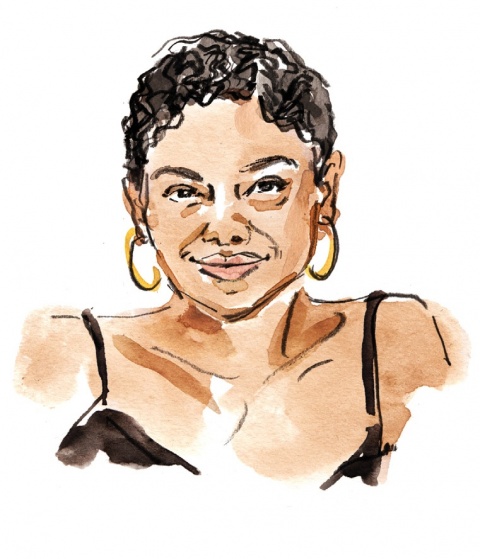
At age 9, two-time Olympic foil fencer Nzingha Prescod ’15 began traveling from her Flatlands neighborhood in Brooklyn to Midtown Manhattan to train at the renowned Peter Westbrook Foundation. Looking back, she realizes how fortunate she was to have a mother who could manage those commutes — four to five times a week, no less — noting that geography is one of the barriers that can limit access to her sport. “I always had to leave [my community] to get not only quality sports, but youth development opportunities,” she says.
Today, Prescod is working to flip the script. As founder and CEO of the nonprofit Prescod Institute for Sport, Teamwork, and Education, she is opening doors “to the richness of fencing” for Black and Brown youth who might find the sport prohibitively expensive. Prescod founded PISTE in her home borough in 2020, soon after a hip injury prompted her retirement from the sport. Its inaugural program, “Fencing in the Park,” introduces young Brooklynites to the sport through informal outdoor lessons during the summer.
PISTE’s flagship initiative, however, is its eponymous Fencing Academy, which provides intensive training throughout the school year and supports participants in pursuing the sport competitively. Originally based at a local YMCA, the academy now operates out of a dedicated space in the Starrett City section of East New York, offering nominally priced lessons and equipment and scholarships for families that need assistance. Participants also have access to academic tutoring.
Prescod is fueled by her belief that fencing’s benefits go beyond medals and accolades; to her, the life skills and connections she cultivated are just as valuable. “The depth of the impact comes from grinding day in and day out,” she says. “That’s when you develop leadership skills and character. You develop community. You develop your extended social capital and network. That’s the true impact of the sport.”
Prescod, who recently gave birth to her first child, a daughter, serves as one of the program’s coaches, giving participants the opportunity to learn from a decorated American fencer. In addition to her Olympic appearances, she made history in 2013 as the first U.S. women’s foil fencer to claim a Grand Prix title; in 2015, Prescod became the first Black woman to medal individually at the Senior World Championships when she took home the bronze. She ranked as high as fifth in the world and was inducted into the USA Fencing Hall of Fame in 2024. Now Prescod is committed to guiding a new generation. “I’m happy to be a beacon and shepherd other kids who look like me into the sport,” she says.
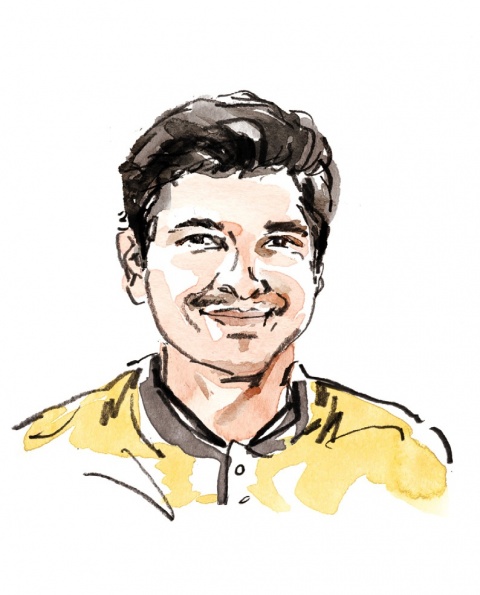
Christian Flores ’22 is committed to eradicating socioeconomic inequality. It’s why he says he spent weeks religiously refreshing the “Work for Us” page on the White House Council of Economic Advisers website. Finally, while riding the subway one Saturday morning, he saw the kind of opportunity he’d been yearning for: a position as special adviser in the Investing in America Cabinet.
By March 2024, Flores was working at the Eisenhower Executive Office Building in D.C. His duties revolved around three legislative initiatives that were part of President Biden’s economic agenda — the Bipartisan Infrastructure Law, the CHIPS and Science Act, and the Inflation Reduction Act.
Raised in Union City, N.J., by Ecuadorian immigrant parents, Flores’ values strongly aligned with the agenda’s goals. “What this administration put out in terms of centering communities that have been left behind, communities that have seen underinvestment for many years, while trying to emphasize the well-being of workers — those things resonate with me,” he says.
His overall mission focused on “tracking indicators of success.” As a special adviser, Flores helped prepare speeches, talking points and slide decks for senior staff, including Investing in America Cabinet chief economist Heather Boushey. Flores, who majored in economics and political science at the College, also enjoyed putting his academic training to use, gathering data, performing statistical analyses and identifying trends. “The problems that we’re trying to address are truly high stakes, and if I get to play even a small part in that, it’s very gratifying,” he says.
As an undergraduate Flores interned in the offices of U.S. Rep. José E. Serrano (D-N.Y.) and New York State Sen. Julia Salazar (D-N.Y.). After graduating, he honed his analytical skills as a senior research analyst at the Federal Reserve Bank of New York. “There are so many ways to help communities, and I really wanted to see where I could best make an impact,” he says.
His time at the White House was influential. “For me, it’s about trying to understand how decisions are made, how policy gets implemented; even just something as simple as understanding how a quotation ends up in the newspaper,” Flores says.
Seeing up close “the big levers that the government can pull to address structural problems” has solidified Flores’ passion: This summer, he’ll begin pursuing an M.P.A. at Princeton and a J.D. at Harvard as part of a four-year joint program between the two. His goal? “Learning more about the world before, I hope, returning to a career in public policy,” he says.
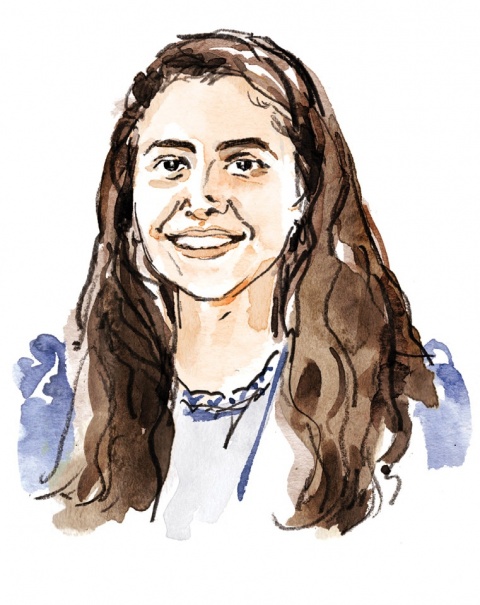
Can mechanical engineering unlock new possibilities for improving cancer treatments? Cynthia Hajal ’16, SEAS’16 certainly thinks so.
As an assistant professor in Northeastern’s Department of Mechanical and Industrial Engineering, Hajal leads a team of researchers who are studying how a tumor’s microenvironment influences its growth, resistance to drugs and efficacy of drug delivery. They do this by recreating those microenvironments, which are essentially the cells, blood vessels and other molecules that surround and support tumors, using microfluidic models. (Picture a device — less than 3 centimeters in size — that uses tiny channels to control the movement of liquids.) This allows researchers to simulate how drugs interact with cells and determine the most effective methods of delivering drugs directly to the tumor.
Hajal’s models combine organ tissue proteins with various types of cells found in healthy tissue. The latter can be selected by researchers to represent specific organs. Then, cancer cells derived from an individual patient’s tumor are added to the mix. Hajal believes these models could eventually prove superior to traditional animal testing.
“You can really recreate what you would see in a patient and get a better idea of their response to different treatments,” she says.
Hajal is from Lebanon and has been enthralled by cancer biology since high school. She intended to follow a premedical track at the College, but says she quickly realized she “preferred answering the questions using research.” She was drawn to the Columbia Combined Plan, which allowed her to concurrently earn a B.A. in economics from the College and a B.S. in mechanical engineering from SEAS. She completed a master’s and a Ph.D., both in mechanical engineering, at MIT. It was there that she began working with microfluidic models; she was named to the MIT Rising Star in Mechanical Engineering cohort in 2021.
Hajal, who has held her position since August 2023, is optimistic that her models will also enhance understanding of the interactions between tumor cells and the healthy cells that surround them — an aspect of cancer treatment she believes warrants more attention. She hopes that clinicians will eventually recognize the potential of her research, paving the way for clinical trials in which her models would be used to guide personalized patient care. “Treatment decisions would be determined based on things that we can observe in our studies,” Hajal says. “That would be very exciting.”
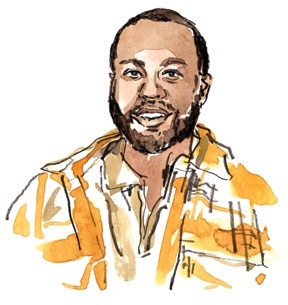
Joshua Foster ’16 is ensuring that buildings reflect the needs of the communities they serve.
As the founder of the Los Angeles-based consulting firm JAF Creative Solutions, Foster collaborates with architecture and design firms, real estate developers, construction companies and nonprofits to involve neighborhoods directly in their projects — especially in areas where people of color have been historically marginalized.
Foster’s “non-traditional” career path began at KFA Architecture, where he contributed to housing developments across L.A. While working through the design and construction phases, Foster sensed a critical gap. He felt that developers and architects too often dismissed local organizers and advocates simply because they lacked the industry-specific terminology or technical knowledge to express their ideas. Foster asked himself whether he could serve as a bridge. “It comes down to caring and maximizing the culture and the talent that communities possess,” he says.
His inspiration ultimately took an entrepreneurial approach; Foster opened his firm in 2021. It currently has four employees and two interns. The primary goal, he says, is to connect communities with resources that are often missing. “We may realize that the community doesn’t have a space where nonprofits can gather, and so there might be ways we can leverage a community room that’s part of the building,” Foster says. “It could be, say, adding a [public] park to an office building.”
JAF Creative Solutions has contributed to various projects in Southern California, such as the Watts Community Center and the Amazing Grace Conservatory. The firm also served as the management and design arm for a virtual museum created by Our Genetic Legacy, a nonprofit dedicated to preserving the histories of BIPOC communities.
For Foster, the project, We The People Museum, represented a move toward exploring possibilities beyond physical structures. “For communities that might not be able to build what they want and need physically, how can we use technology?” he says.
Foster is also an adjunct professor of architecture at East Los Angeles College and Long Beach City College, and the national historian for the National Organization of Minority Architects. His work earned him the 2023 Robert Kennard, FAIA-Equity, Diversity & Inclusion Award from the American Institute of Architects’ L.A. chapter, and he was a 2024 Building Design+Construction “40 Under 40” honoree.
A Philadelphia native, Foster developed an early interest in architecture; his passion solidified during high school, when he traveled in Europe as part of the People to People Student Ambassador Program. He says he chose the College for the opportunity to pursue architecture while playing football, and went on to earn a master’s in architecture at the University of Southern California. The connections he’s formed along the way, he says, have been key to his success. “Building those relationships, especially when I moved to Los Angeles, allowed me to understand how different communities have different needs,” he says.
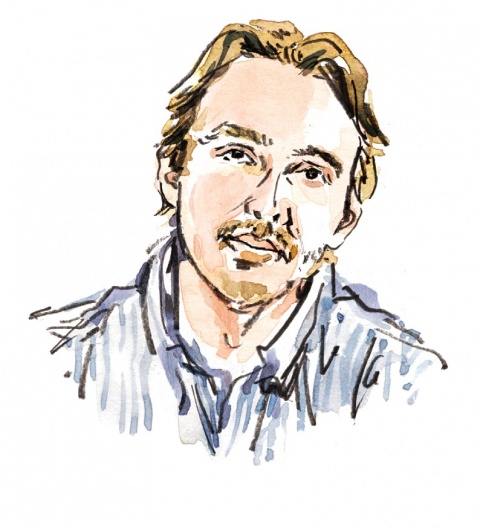
Writer and journalist Max Marshall ’16 fell into crime reporting by accident.
Marshall was living in Hanoi postgraduation as part of a Princeton in Asia journalism fellowship, and made his first big magazine pitch to GQ — to profile the young film director Jordan Vogt-Roberts, who’d recently made the blockbuster Kong: Skull Island and was living in Ho Chi Min City.
The two men met for an interview at a nightclub. Then a month before the story was to run, Vogt-Roberts was brutally assaulted, randomly, by 12 men with ties to international organized crime. Local police warned Vogt-Roberts not to look into it, so he reached out to Marshall: Would he help him solve the case?
Marshall detailed months of “playing full-on Hardy Boys” and the criminals’ eventual arrests in his riveting 2018 GQ feature, “Attack on Skull Island.” He had also made an interesting discovery. “I realized that crime reporting can be a very effective Trojan horse to write about all sorts of other things,” Marshall says.
What he wanted to write about was the rise of Xanax in the fraternity world. Marshall, who grew up in Dallas, had initially become curious when his high school friends described widespread availability and abuse of the drug at their colleges. Looking for a hook, Marshall googled “Xanax arrest fraternity”; the first result was a 2016 press release about Kappa Alpha brothers at the College of Charleston who had been caught with 40,000 Xanax pills. The story also alluded to a connection with a student homicide. Marshall got a defense lawyer on the phone, who let it slip that the unreported number of pills was closer to 3 million. “That’s when I knew there was something bigger there,” Marshall says.
Five years, hundreds of interviews, and thousands of police reports and court documents later, the result was Among The Bros: A Fraternity Crime Story, which was released to acclaim in late 2023. The New York Times called it “a page-turning triumph”; Vanity Fair published an excerpt. The juicy story traces the journey of several KAs from pledges to interstate drug traffickers — “hubris, status, money, drugs, murder” — with Marshall as a winning first-person narrator.
Throughout the book, Marshall, who graduated from the College summa cum laude, grounds his reporting with parallels to his own (not felonious!) experience at Columbia’s Delta Sigma Phi fraternity; in conversation, he also credits an influential class, “Traditions in Nonfiction,” with School of the Arts professor Mark Rozzo, for not only demonstrating that style of writing as an art form, but “making it seem doable,” Marshall says.
Recently, he has been at work on a second book for HarperCollins as well as collaborating on a documentary about youth cattle competitions in Texas. He’s also finishing up the screenplay for Among the Bros for Sony Pictures, and is enjoying the different mechanics of that medium: “I love the way the characters talk in this world, the vernacular of this southern Greek life,” Marshall says. “It’s a great sandbox to play around in.”
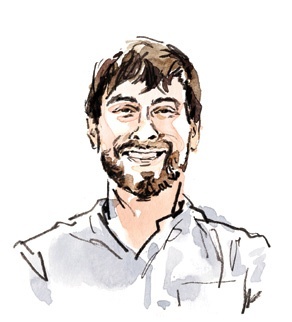
Over the past decade Zan Gilani ’15 has emerged as an innovative force at Duolingo, helping to transform the language-learning app from a small education startup to a thriving company with millions of users worldwide. As a principal product manager, Gilani has been harnessing the power of generative AI, most recently introducing Video Call, a feature that allows users to practice speaking with “Lily” — a virtual teenager with purple hair and a signature deadpan expression.
The feature, Gilani says, addresses a common challenge for Duolingo’s nearly 113 million monthly users: the fact that many of them lack access to native speakers for practice, and often feel intimidated when speaking with someone who is fluent. “We had to figure out a way to give you the practice, give you the actual skill, let you exercise the muscle, but also do it in a way that’s accessible and approachable,” Gilani says.
Gilani’s fascination with languages, as well as with behavioral psychology, influences his product choices. Lily, a preexisting Duolingo character, is designed to have broad appeal and come across with as much human relatability as possible. “She has her own motivations. She’s not always impressed with you, and sometimes she’s going to be sassy,” Gilani says with a laugh. “That’s all going to make for a much more engaging experience. And if we can have you engaged, you are more likely to come back.”
Gilani joined Duolingo’s marketing team shortly after graduation, eventually moving to the department where he really wanted to be: product management. “It seemed more fulfilling to build the product itself, to create the features and functionality,” he says.
He describes his current role as “interdisciplinary”; one moment he might be analyzing data and pondering high-level strategies about which products to launch, and the next he might be in the weeds, working with the engineers who write the code and with the app’s designers to fine-tune details. That involves being in contact with the app’s users and listening to their feedback.
Gilani grew up speaking both Urdu and English in his hometown of Karachi, Pakistan. He studied Chinese at the College and spent a summer in Beijing, immersing himself in the language. Having traveled great distances to further his own education, at Duolingo he is driven by the knowledge that many users are learning English to open the door to better job prospects and life-changing opportunities. “It’s very rewarding to work on the cutting edge of technology,” he says. “And it’s very rewarding to do this in service of education.”

Ask Chelsea Miller ’18 to name one of the most important lessons she’s learned as an activist, and she doesn’t hesitate: “You don’t have to wait for permission [to get involved].”
Miller knows whereof she speaks. On May 31, 2020 — six days after George Floyd’s murder ignited what would become one of the largest social movements in U.S. history — she and Nialah Edari BC’17 launched Freedom March NYC. Miller had joined a protest outside Brooklyn’s Barclays Center the day before and noticed a lack of cohesion on the front lines. Between that and the aggressive police response, “the message was getting lost,” she says.
She and Edari took matters into their own hands, and by the next evening, they had gathered several hundred protesters together at Washington Square Park to march peacefully to One Police Plaza. That summer, the pair went on to raise more than $50,000 and organize additional protests, solidifying Freedom March as one of the largest youth-led civil rights organizations in New York. For her efforts, Miller received a Muhammad Ali Humanitarian Award in 2021.
“We weren’t looking to create something,” Miller says. “I think something was created in us, and that is because of what we witnessed [in Floyd’s death]. I felt like it was my duty to show up.”
Today, Miller has broadened her reach. She still advocates for her causes, which she describes broadly as Black youth futures, from advancing economic justice and educational opportunity, to combating mass incarceration and gun violence. But she is equally clear that she wants to use her voice in other ways. “A lot of the work I do now is helping other young people unlock their potential and hone their leadership skills,” she says.
In 2023, she publicly launched CPM Global, which creates media and social impact campaigns for sports, education, fashion, philanthropy and other industries. (Past partners and clients include Nike, Versace, Essence and Tufts University.) Miller travels worldwide as a public speaker and lately has focused on documenting stories from the 1960s’ Civil Rights Movement. (“If you don’t learn from the past, then you can’t really visualize how to build a better future,” she says.)
Miller has a keen sense of the influence of her own history. A first-generation Jamaican American, she was raised in Brooklyn by a single mom who was a social worker and who at one point turned their first floor into a group home for young girls. “That experience taught me that there are so many invisible [forces] that exist in our country that shape the lives of so many people,” Miller says.
She acknowledges there are times when motivation is hard to find. Asked how she stays inspired, she paraphrases from a recent interview she did with Civil Rights veteran Larry Rubin. “It was one of the most profound things I’d heard in a long time,” Miller says. “He said, ‘You get your people, you stick together and you lose together — until one day you win.’”
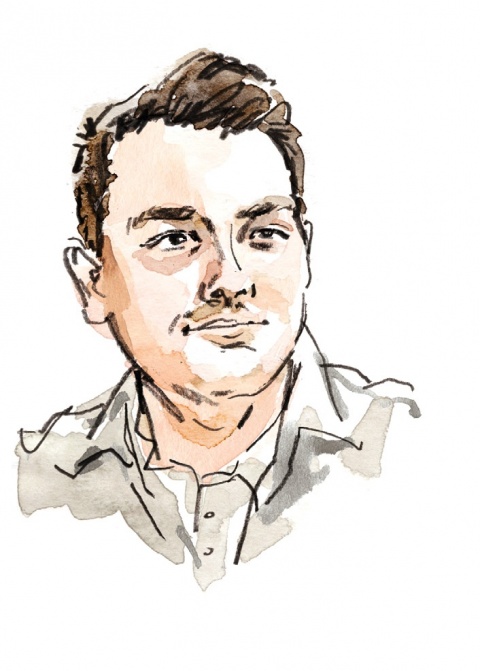
When Nikola Danev ’20 first suited up for New York’s Varna Volunteer Fire Company (VVFC) in 2021, its membership was low and leadership depleted. The Upstate outfit was at risk of shutting down — which would have left some 3,500 people in a 16.7-square-mile rural area without their primary emergency responders. At the time, Danev was a doctoral student researching bovine genetics at Cornell’s Baker Institute for Animal Health. He was recruited by a member of his lab, Mason Jager.
Danev joined as an EMT but quickly rose to deputy chief. After taking “every class you could think of for firefighters,” he set out to rebuild the company and ensure it could continue operating, all while helping to extinguish some very real fires.
Alongside Jager, who became chief, Danev turned the firehouse into a space that would foster community and encourage fellow Cornell students to volunteer. That meant raising funds for amenities like exercise equipment, a video game console and streaming subscriptions. Jager and Danev also created a study room and installed a fire pit — Danev’s idea. Within three years, VVFC had grown from 7 to 80 volunteers. “Once you build community, people stay for community,” Danev says.
VVFC is now thriving: In November 2023, it was named Fire Department of the Year by the Tompkins County Department of Emergency Response. It also received the 2024 Innovation Award for Organizational Innovation in the field of Emergency Medical Services from the New York State Department of Health.
A native of Skopje, Macedonia, Danev attended the College as a John Jay Scholar. He decided to volunteer with VVFC to step out of the Ivy League bubble — the same reason that as an undergraduate he joined the Columbia University Emergency Medical Services, the student-operated volunteer ambulance corps that serves Morningside Heights. He became a New York State-certified EMT and eventually CUEMS director. “Responding to calls exposed me to the folks we live with and everyone who surrounds us,” Danev says.
Danev intended to pursue a premedical track and saw CUEMS as an opportunity to gain experience providing patient care. By his junior year, however, he realized his passion was research. After rotating through various labs in his first years at Cornell, Danev joined one that allowed him to work with a pharmaceutical company to develop a treatment for mastitis, a common bovine udder infection. “It was a project that felt more tangible than basic research,” says Danev, who recently completed a Ph.D. focused on genetic research for mastitis treatments. He has since accepted a position with the Boston Consulting Group in Washington, D.C.
Though he is saying goodbye to VVFC, Danev is confident about its future. “This [fire] department that was on the verge of shutting down is constantly growing and developing, and I know it will survive without me,” he says.

Published three times a year by Columbia College for alumni, students, faculty, parents and friends.
Columbia Alumni Center
622 W. 113th St., MC 4530, 6th Fl.
New York, NY 10025
212-851-7852
cct@columbia.edu
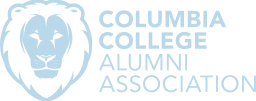
Columbia Alumni Center
622 W. 113th St., MC 4530, 4th Fl.
New York, NY 10025
212-851-7488
ccalumni@columbia.edu